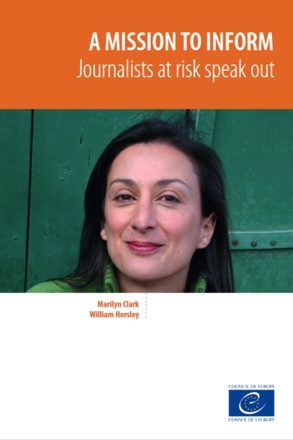
While the findings of the book cannot be representative of the general situation in the member states due to the restrained number of interviewed journalists, each of the book’s five chapters provides insights for understanding and putting in place essential safeguards in law and practice for journalists to fulfil their “mission to inform”.
Chapter I investigates the pressures experienced by the participating journalists. The chapter identifies and analyses four types of threat and pressure: physical, psychological, judicial or legal, and economic.
Chapter II discovers how this group of journalists was affected by sustained intimidation and hostility, and the chilling effect of such intimidation on freedom of expression. The chapter reveals the high price journalists often pay for their commitment in terms of the psychological and other negative impacts on their personal lives. The journalists also vehemently condemn the corrosive consequences of self-censorship.
Chapter III explores how the legal, political, economic and cultural contexts of their particular environments shape the experiences of journalists in terms of the obstacles and pressures that hinder their work. The chapter illuminates the ways in which laws, practices and socio-cultural norms in different parts of Europe affect their ability to practise free and inquiring journalism.
Chapter IV discusses how the interviewed journalists develop resilience to continue their work despite the often hostile environments in which they operate. The chapter examines the personal characteristics and social circumstances that affect the capacity of journalists to maintain optimal functioning.
Chapter V takes stock of the lessons to be learned from these revealing testimonies and observations by journalists at the front line of their profession. It relates this first-hand data to the urgent efforts to encourage member states to implement guidelines set out in Council of Europe recommendations.
The study calls for effective measures to protect the safety of journalists at risk, prosecute the perpetrators of attacks and create genuinely favourable environments for free, independent and diverse media. The forward-looking measures outlined include legal and regulatory reforms; effective measures of protection; improved oversight and reporting mechanisms to guard against threats; public media literacy programmes; and additional support through professional training and psychosocial support where needed.
Tags: Safety of journalists SLAPP Media capture AdvocacyThe content of this article can be used according to the terms of Creative Commons: Attribution-NonCommercial 4.0 International (CC BY-NC 4.0) . To do so use the the wording "this article was originally published on the Resource Centre on Media Freedom in Europe" including a direct active link to the original article page.

